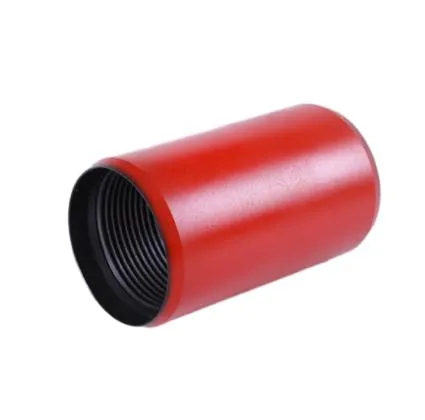- Afrikaans
- Albanian
- Amharic
- Arabic
- Armenian
- Azerbaijani
- Basque
- Belarusian
- Bengali
- Bosnian
- Bulgarian
- Catalan
- Cebuano
- Corsican
- Croatian
- Czech
- Danish
- Dutch
- English
- Esperanto
- Estonian
- Finnish
- French
- Frisian
- Galician
- Georgian
- German
- Greek
- Gujarati
- Haitian Creole
- hausa
- hawaiian
- Hebrew
- Hindi
- Miao
- Hungarian
- Icelandic
- igbo
- Indonesian
- irish
- Italian
- Japanese
- Javanese
- Kannada
- kazakh
- Khmer
- Rwandese
- Korean
- Kurdish
- Kyrgyz
- Lao
- Latin
- Latvian
- Lithuanian
- Luxembourgish
- Macedonian
- Malgashi
- Malay
- Malayalam
- Maltese
- Maori
- Marathi
- Mongolian
- Myanmar
- Nepali
- Norwegian
- Norwegian
- Occitan
- Pashto
- Persian
- Polish
- Portuguese
- Punjabi
- Romanian
- Russian
- Samoan
- Scottish Gaelic
- Serbian
- Sesotho
- Shona
- Sindhi
- Sinhala
- Slovak
- Slovenian
- Somali
- Spanish
- Sundanese
- Swahili
- Swedish
- Tagalog
- Tajik
- Tamil
- Tatar
- Telugu
- Thai
- Turkish
- Turkmen
- Ukrainian
- Urdu
- Uighur
- Uzbek
- Vietnamese
- Welsh
- Bantu
- Yiddish
- Yoruba
- Zulu
Feb . 03, 2025 05:11
Back to list
Tubing Coupling
Understanding the distinct applications and unique features of bull plugs and hex plugs is crucial for industries reliant on effective sealing and plugging solutions. While both serve similar fundamental purposes, their design differences and application contexts vary significantly, impacting industry operations.
Conversely, for non-extreme conditions where accessibility and ease of use are paramount, hex plugs stand out. In HVAC systems, for instance, hex plugs facilitate easy maintenance and quick checks, crucial for systems that need regular inspections. Their design offers a perfect balance between secure sealing and convenient handling, proving cost-effective for large-scale installations where maintenance efficiency can lead to significant savings in operational costs. Furthermore, understanding the material compatibility is key when choosing between these plugs. For environments exposed to aggressive substances, selecting bull or hex plugs made from chemically resistant materials can vastly improve longevity and performance. In chemical processing plants, where exposure to reactive agents is common, using suitably coated or alloy-based plugs prevents degradation, thereby maintaining system safety and efficiency. When considering purchasing decisions, it is prudent to assess not only the immediate application but also future maintenance and safety requirements. Engaging with suppliers who provide detailed specifications and customer support enhances decision-making, ensuring that the chosen plugs meet all operational standards and certifications. In conclusion, comprehending the nuanced differences between bull plugs and hex plugs equips industry professionals with the knowledge to make informed decisions, optimizing both safety and performance. Their role, while often understated, forms the backbone of many industrial processes, making the right choice essential for operational success. Investing time in understanding these components, backed by expert consultation, leads to improved operational efficiency and reliability, underlying their significance in industrial applications.


Conversely, for non-extreme conditions where accessibility and ease of use are paramount, hex plugs stand out. In HVAC systems, for instance, hex plugs facilitate easy maintenance and quick checks, crucial for systems that need regular inspections. Their design offers a perfect balance between secure sealing and convenient handling, proving cost-effective for large-scale installations where maintenance efficiency can lead to significant savings in operational costs. Furthermore, understanding the material compatibility is key when choosing between these plugs. For environments exposed to aggressive substances, selecting bull or hex plugs made from chemically resistant materials can vastly improve longevity and performance. In chemical processing plants, where exposure to reactive agents is common, using suitably coated or alloy-based plugs prevents degradation, thereby maintaining system safety and efficiency. When considering purchasing decisions, it is prudent to assess not only the immediate application but also future maintenance and safety requirements. Engaging with suppliers who provide detailed specifications and customer support enhances decision-making, ensuring that the chosen plugs meet all operational standards and certifications. In conclusion, comprehending the nuanced differences between bull plugs and hex plugs equips industry professionals with the knowledge to make informed decisions, optimizing both safety and performance. Their role, while often understated, forms the backbone of many industrial processes, making the right choice essential for operational success. Investing time in understanding these components, backed by expert consultation, leads to improved operational efficiency and reliability, underlying their significance in industrial applications.
Next:
Latest news
-
Tubing Pup Joints: Essential Components for Oil and Gas OperationsNewsJul.10,2025
-
Pup Joints: Essential Components for Reliable Drilling OperationsNewsJul.10,2025
-
Pipe Couplings: Connecting Your World EfficientlyNewsJul.10,2025
-
Mastering Oilfield Operations with Quality Tubing and CasingNewsJul.10,2025
-
High-Quality Casing Couplings for Every NeedNewsJul.10,2025
-
Boost Your Drilling Efficiency with Premium Crossover Tools & Seating NipplesNewsJul.10,2025
Related Products







